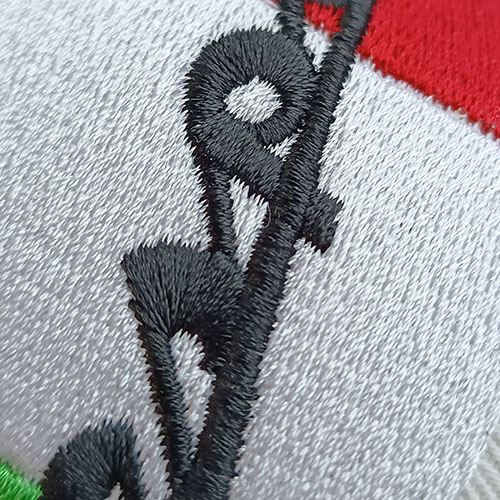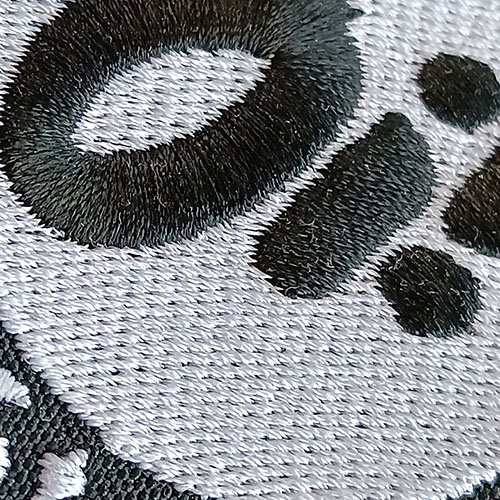Embroidery is one of the oldest methods of fabric decoration. It has accompanied humanity for thousands of years, evolving from simple hand-made patterns to precise, mass-produced embroidery thanks to modern machines and software. This allows us to create highly intricate designs that add unique character to clothing and everyday items.
The Key Element of Embroidery – Stitches
The final effect of embroidery largely depends on the type of stitch used. In this article, we introduce three basic types of embroidery stitches, their applications, and the benefits of using them.
Types of Stitches in Computerized Embroidery
1) Running Stitch
The running stitch takes the form of a straight or curved line, depending on the pattern. It usually consists of equal-length segments and serves as:
a foundation for more complex motifs, providing them with stability,
an outline that highlights specific elements,
a tool for creating very thin lines, such as in embroidered logos.

Outline of this graphic is a running stitch.
2) Satin Stitch
The satin stitch is a dense zigzag stitch with a length ranging from a few millimeters to even 1.5 cm. Its applications include:
embroidering most texts,
highlighting details in motifs,
outlining embroidery applications and patches,
3D embroidery, where it tightly covers the foam underneath, creating a raised effect.
It is important to note that when the width exceeds 1.2 cm, the embroidery may become looser and more prone to snagging, which can lead to fraying and breakage.

Satin stitch/embroidery is used to make the text above.
3) Tatami Stitch
The tatami stitch, similar to the running stitch, consists of short, even segments that are densely arranged side by side. It is used for:
completely covering specific areas with embroidery,
creating unique visual effects by manipulating stitch direction and density.

The background of this image (white thread) is a tatami stitch.
Factors Influencing Stitch Selection
The choice of a particular stitch depends on several key factors:
Fabric type – less dense stitches are better for delicate materials, while denser stitches can be used on thicker fabrics.
Design size – small patterns require contour and decorative stitches, while larger areas are best embroidered with fill stitches.
Final effect – changing the direction and arrangement of stitches allows for achieving a three-dimensional effect and unique textures.
Benefits of Stitch Variety
Unlimited creative possibilities – computerized embroidery enables the creation of unique patterns that reflect individual style.
High-quality execution – precise stitches ensure the durability and aesthetics of embroidery.
Wide range of applications – computerized embroidery is used in the fashion, advertising, military, and workwear industries.
Conclusion
The world of embroidery stitches is incredibly diverse, and choosing the right one is key to achieving the perfect final result. If you want to learn more about the possibilities of computerized embroidery or find the ideal solution for your projects, contact us! Our experts will be happy to advise you and help create unique designs.

